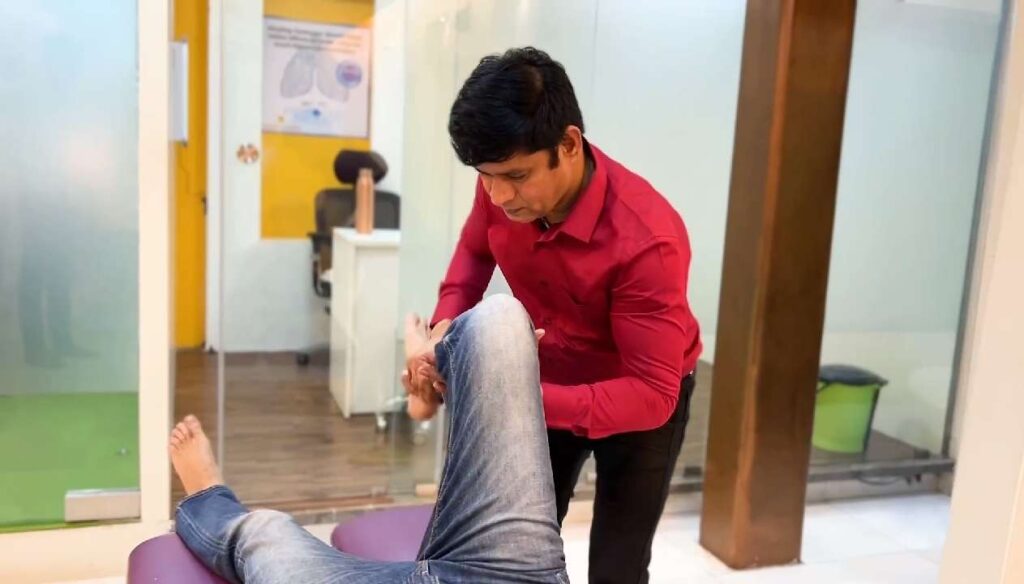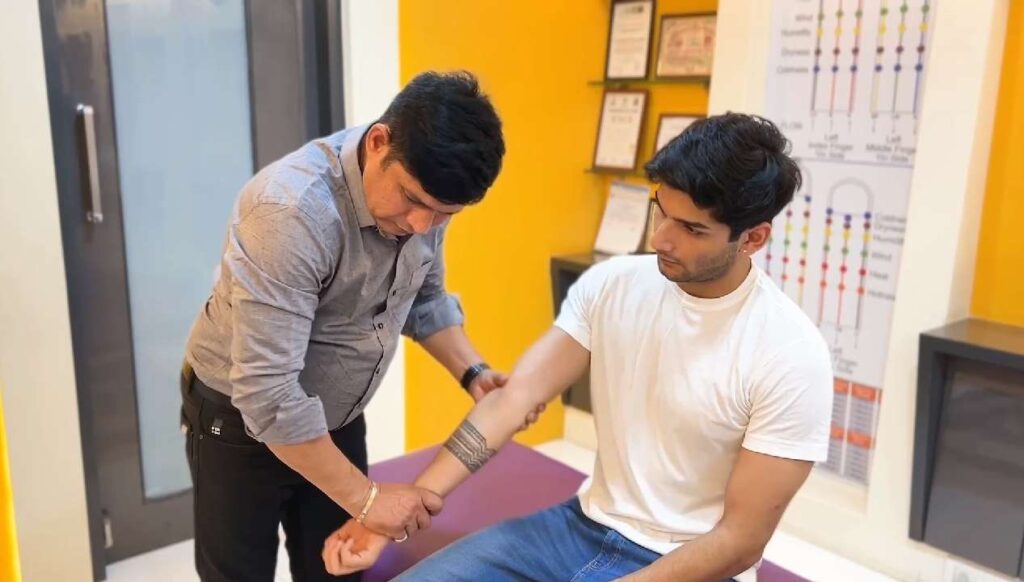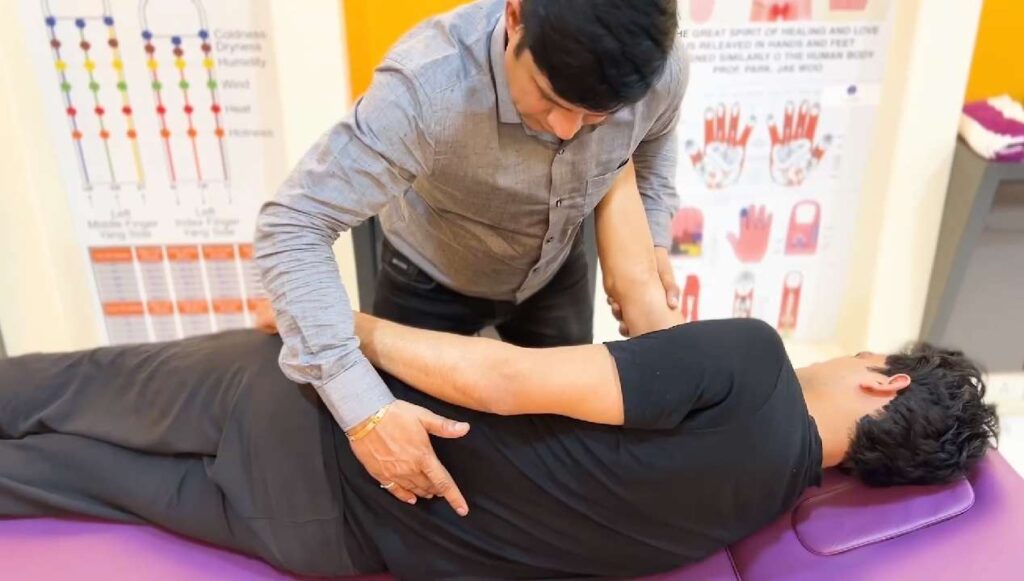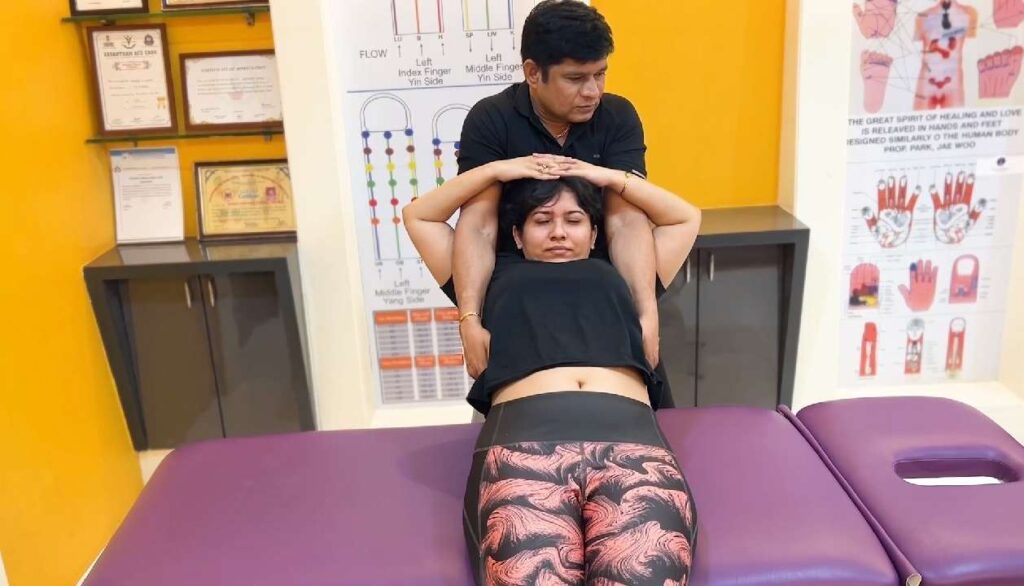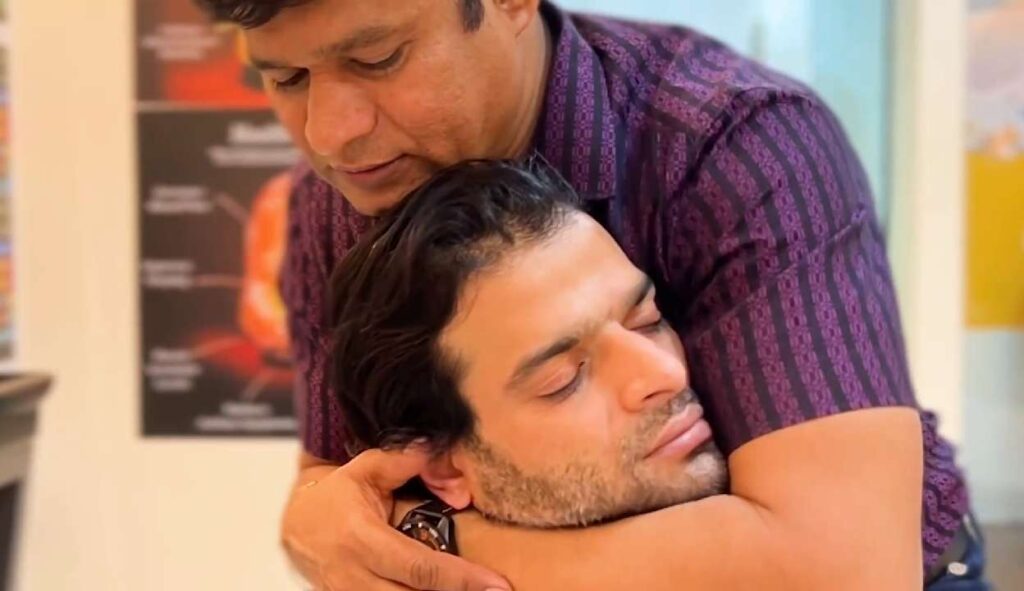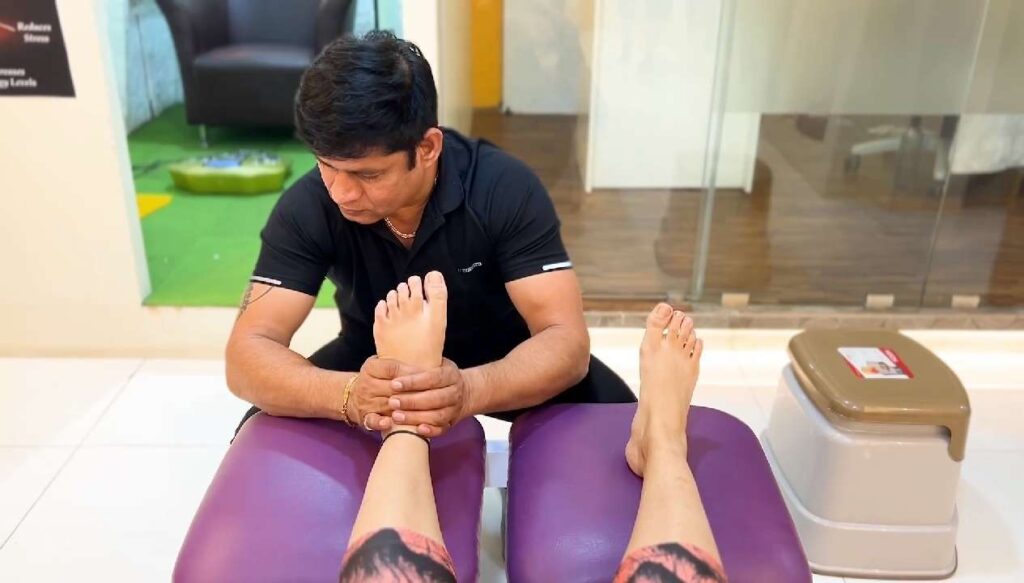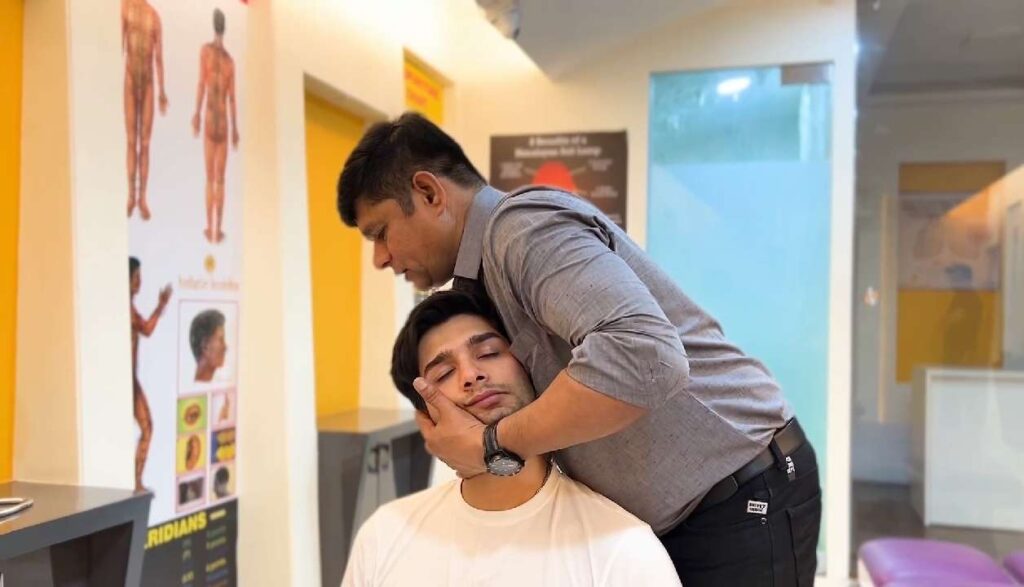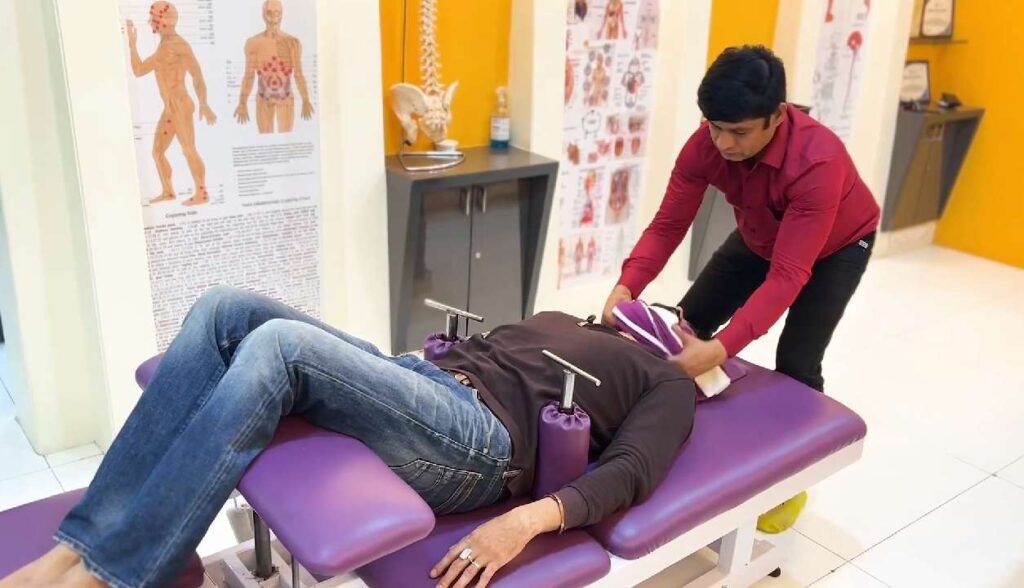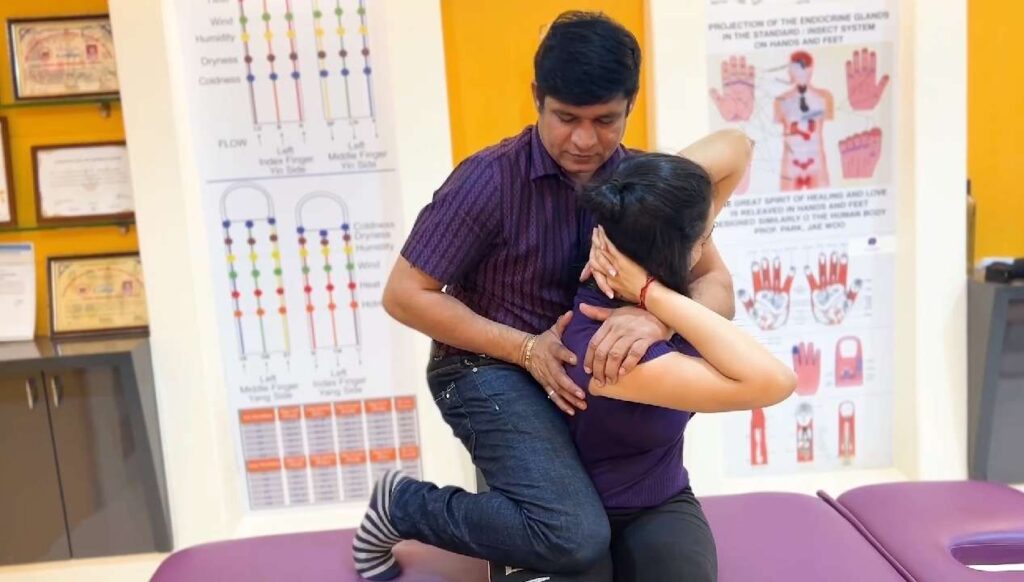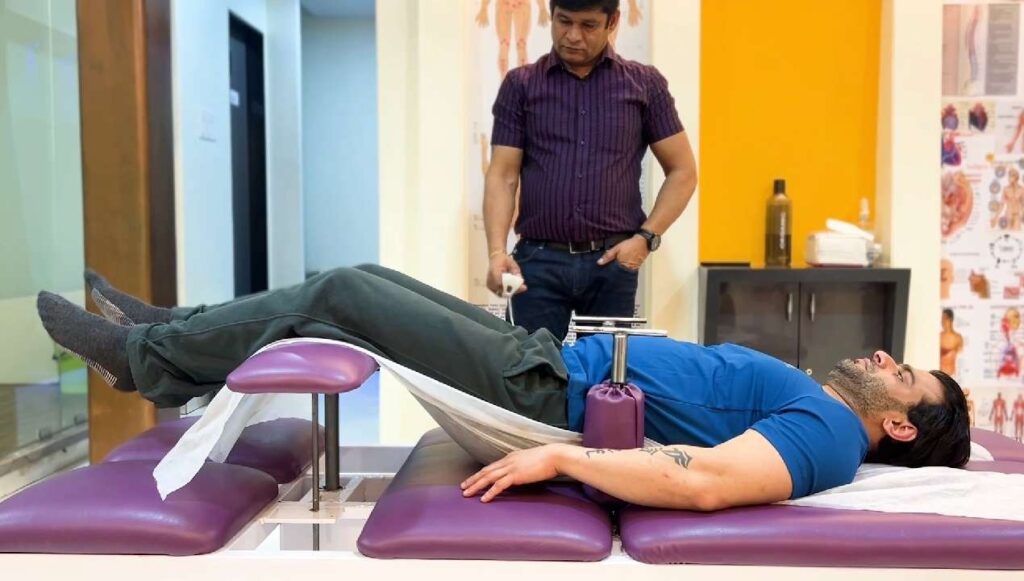Chiropractor
Ankle Pain Treatment In Versova
📌 Top Verified Chiropractors In Versova
Services Offered By Dr. Ravi Shinde
We Offer a Whole Range of Chiropractic Services
Other Chiropractors In Versova

Chiropractor
Ankle Pain
Dr. Aman Shaikh
Mumbai, Versova
Specialist in Chiropractic Treatment

Chiropractor
Ankle Pain
The Physiotherapy Clinic
Mumbai, Versova
Specialist in Chiropractic Treatment
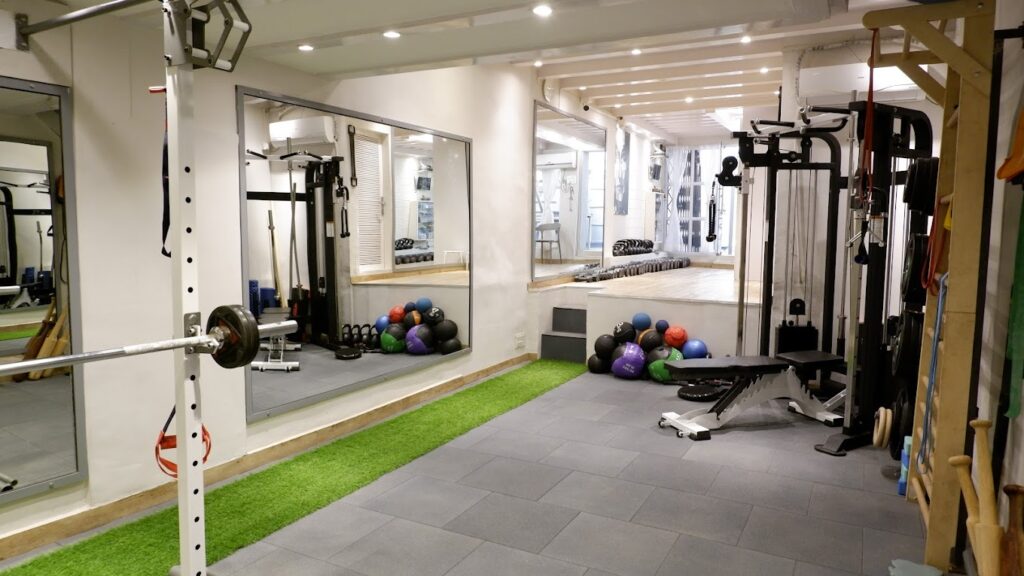
Chiropractor
Ankle Pain
DrDivyaCures Physiotherapy
Mumbai, Versova
Specialist in Chiropractic Treatment
People Also Ask?
(FAQs About Ankle Pain Treatment In Versova
)
1️⃣ Is ankle pain a serious condition that requires medical attention?
Ankle pain can range from mild discomfort to severe issues requiring medical attention. If the pain persists for more than a few days, worsens over time, or is accompanied by swelling and difficulty walking, it’s best to consult a specialist. Early diagnosis can prevent long-term complications.
2️⃣ What treatment options are available for ankle pain?
Treatment depends on the cause of your ankle pain. It may include rest, ice therapy, physiotherapy, medication, ankle braces, or in severe cases, surgical intervention. A specialist will assess your condition and recommend the most effective treatment.
3️⃣ Do I need an X-ray or MRI for ankle pain diagnosis?
Not always. A doctor will first conduct a physical examination. If a fracture, ligament tear, or serious injury is suspected, an X-ray or MRI may be recommended to confirm the diagnosis and plan appropriate treatment.
4️⃣ How long does it take to recover from ankle pain?
Recovery time varies based on the severity of the injury. Minor sprains may heal within a few days to weeks, while fractures or ligament injuries might take months. Adhering to your treatment plan, including physiotherapy, can speed up recovery.
5️⃣ Can I prevent ankle pain in the future?
- Yes! Strengthening exercises, proper footwear, warming up before physical activities, and avoiding sudden movements can help prevent ankle injuries. If you have a history of ankle issues, using ankle supports may also reduce the risk.
Testimonials
Amit Sharma
“I had been struggling with ankle pain for months, but after visiting this clinic, I finally found relief. The doctor explained everything clearly, and the treatment worked wonders!”
Farzana Shaikh
“The care and attention I received here were exceptional. The physiotherapy sessions really helped me regain my mobility. Highly recommended!”
Rohan Iyer
“I was worried about my ankle pain, but the doctor reassured me and provided a treatment plan that worked. Now, I can walk pain-free again!”
Pooja Desai
“A very professional and caring approach. The staff was supportive, and the exercises they suggested made a huge difference in my recovery.”
Sameer Patil
"I thought surgery was my only option, but the treatment here helped me heal naturally. I appreciate the expert advice and support I received.”
Blogs Related To Ankle Pain Treatment In Versova
1️⃣ 5 Everyday Habits That May Be Causing Your Ankle Pain (And How to Fix Them)
Introduction:
Do you often experience ankle pain without knowing why? It might not be due to an injury but rather daily habits that are unknowingly straining your ankles. Small lifestyle changes can help prevent pain and improve overall joint health.
Main Body:
✅ Wearing the Wrong Shoes – High heels, flat sandals, or worn-out sneakers can put excessive pressure on your ankles. Opt for supportive footwear.
✅ Skipping Warm-Ups – Jumping straight into exercise without proper stretching can lead to stiffness and injury. Always warm up before physical activity.
✅ Poor Posture & Walking Patterns – Walking with improper posture or rolling your ankles inward can cause misalignment and pain over time.
✅ Ignoring Minor Injuries – A mild sprain left untreated can lead to chronic instability and pain. Rest and rehabilitation are key.
✅ Standing or Sitting for Long Hours – Lack of movement can cause stiffness, while standing too long puts strain on the joints. Try gentle stretches throughout the day.
Conclusion:
By making small adjustments in your daily routine, you can significantly reduce the risk of ankle pain. If your pain persists, consult a specialist for personalized treatment.
2️⃣ Ankle Pain Myths Debunked: What Really Works and What Doesn’t
Introduction:
When dealing with ankle pain, you might hear a lot of conflicting advice. Should you use ice or heat? Is resting enough, or do you need therapy? Let’s separate fact from fiction.
Main Body:
❌ Myth: Ankle pain always means a serious injury.
✅ Truth: Sometimes, it’s just muscle fatigue or mild strain, but persistent pain should be checked by a doctor.
❌ Myth: Resting is the best cure for ankle pain.
✅ Truth: While rest is important, movement and physiotherapy often speed up recovery.
❌ Myth: You should always apply heat to relieve pain.
✅ Truth: Ice is better for fresh injuries to reduce swelling, while heat helps with stiffness in chronic conditions.
❌ Myth: Only athletes suffer from ankle pain.
✅ Truth: Anyone can develop ankle pain due to poor footwear, posture, or lack of exercise.
Conclusion:
Believing in myths can delay proper treatment. If you’re unsure, consult a specialist for the right approach to healing your ankle pain.
3️⃣ The Best Footwear Choices for Preventing and Managing Ankle Pain
Introduction:
Did you know that the shoes you wear have a direct impact on your ankle health? The wrong footwear can lead to discomfort, instability, and long-term pain. Let’s explore the best options for happy, pain-free ankles.
Main Body:
👟 For Everyday Wear: Choose shoes with cushioned soles, arch support, and a snug but comfortable fit.
👠 For Formal Wear: Avoid high heels or opt for low, chunky heels with ankle support.
🏃♂️ For Running & Sports: Invest in sport-specific shoes with ankle stability and shock absorption.
🩳 For Home Use: Walking barefoot on hard floors can strain your feet—use soft slippers with arch support.
🚶♂️ For People with Flat Feet or High Arches: Customized insoles or orthopedic shoes can help distribute weight evenly.
Conclusion:
Wearing the right footwear can prevent ankle pain and improve mobility. If you’re experiencing ongoing pain, consult a specialist to check if your shoes are the culprit.
4️⃣ Physiotherapy vs. Surgery: Which is the Best Option for Chronic Ankle Pain?
Introduction:
If you’ve been struggling with ankle pain for a long time, you might wonder whether physiotherapy is enough or if surgery is necessary. Let’s break down the pros and cons of each approach.
Main Body:
🦶 When is Physiotherapy Recommended?
✔️ For mild to moderate pain
✔️ After an ankle sprain or minor ligament injury
✔️ To improve mobility and strength without invasive treatment
🔪 When is Surgery Needed?
✔️ For severe ligament tears, fractures, or joint degeneration
✔️ If physiotherapy and other treatments haven’t worked
✔️ When the pain affects daily life significantly
🆚 Which is Better?
In most cases, physiotherapy is the first line of treatment, and surgery is considered only when other options fail. A doctor can assess your condition and guide you accordingly.
Conclusion:
Each case is unique, so the best treatment depends on your specific condition. Consulting an ankle specialist is the best way to determine the right path for your recovery.
5️⃣ How to Strengthen Your Ankles: A Guide to Injury Prevention
Introduction:
Weak ankles are more prone to sprains, instability, and chronic pain. The good news? You can strengthen your ankles with simple exercises to prevent injuries and improve overall mobility.
Main Body:
🏋️♂️ Best Ankle-Strengthening Exercises:
✔️ Toe Raises: Stand on your toes and slowly lower down to build calf and ankle strength.
✔️ Ankle Circles: Rotate your ankles clockwise and counterclockwise to improve flexibility.
✔️ Resistance Band Workouts: Use a band to strengthen ankle muscles by pushing and pulling against resistance.
✔️ Balance Exercises: Stand on one foot for 30 seconds to improve stability.
✔️ Stretching Routine: Regular stretching helps prevent stiffness and enhances mobility.
Conclusion:
A strong ankle is a healthy ankle! Incorporating these exercises into your routine can reduce the risk of injury and keep you active. If you’re experiencing pain, consult a specialist before starting any new exercise regimen.
Table of Contents
Toggle
